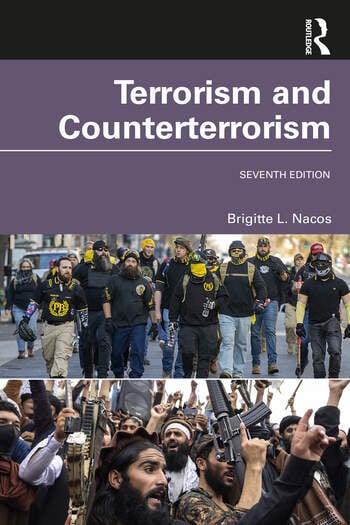
Brigitte Nacos’s book “Terrorism and Counterterrorism” stands as one of the most authoritative and comprehensive academic works in the contemporary analysis of terrorism and security studies. The author, who has spent years researching terrorism, politically motivated violence, the role of media in security contexts, and U.S. counterterrorism strategies, offers in this edition an updated and critically considered perspective on the events that have played a cardinal role in shaping the global security environment of the 21st century.
The 2023 edition, the seventh in the series, holds particular significance as it reflects the latest trends in terrorism and counterterrorism. These include the U.S. withdrawal from Afghanistan, the resurgence of the Taliban, the regional transformation of the so-called Islamic State, and the growing threat of domestic extremism in Western societies. The book is unique in that it combines historical, political, ideological, and media-analytical components, enabling readers to assess the phenomenon of terrorism from a broad and complex perspective.
The first part of the book is dedicated to defining terrorism, exploring its history, and examining structural and ideological dimensions. Nacos emphasizes that while the characteristics of terrorism evolve over time, its essence as a violent and symbolic act remains constant. She explores various types of terrorism, including religious, ethno-nationalist, ideological, and state-sponsored forms. The author provides in-depth profiles of groups such as al-Qaeda, ISIS, Hamas, the IRA, and other non-Islamist extremist organizations active in the West.
The second part focuses on counterterrorism policies and strategies. Nacos discusses post-9/11 responses by the U.S. and other democratic states, including the Patriot Act, the creation of new national security structures, enhanced intelligence capabilities, and preventive detention policies. She notes that such approaches often infringe on fundamental civil liberties and, in some cases, may even inspire further radicalization.
Particularly compelling is the author’s analysis of the media’s role in shaping public perceptions of terrorism. As Nacos argues, media often—albeit unintentionally—amplifies terrorist messages. Sensational coverage and the widespread dissemination of graphic visuals tend to stoke fear and alienation. She also evaluates the influence of social media, especially in the context of recruitment and radicalization.
The 2023 edition highlights emerging challenges related to domestic terrorism and extremist movements in the U.S. and Europe. These include far-right radicalism, racist and antisemitic ideologies, and conspiracy theory-driven groups that question the legitimacy of democratic institutions. Nacos also addresses the role of women in terrorist organizations and emphasizes how integrating a gender perspective could reshape counterterrorism strategies.
This book provides a deep, balanced, and critical examination of the multifaceted nature of terrorism and the policies nations pursue in response to politically motivated violence. It is essential reading for students, researchers, and professionals in political science, international relations, and security studies, as well as for anyone interested in public discourse. Nacos makes it clear that defeating terrorism is not achievable through military means alone; a broader approach—one that involves education, media, civil society, and human rights—is essential to building effective and sustainable counterterrorism policy.